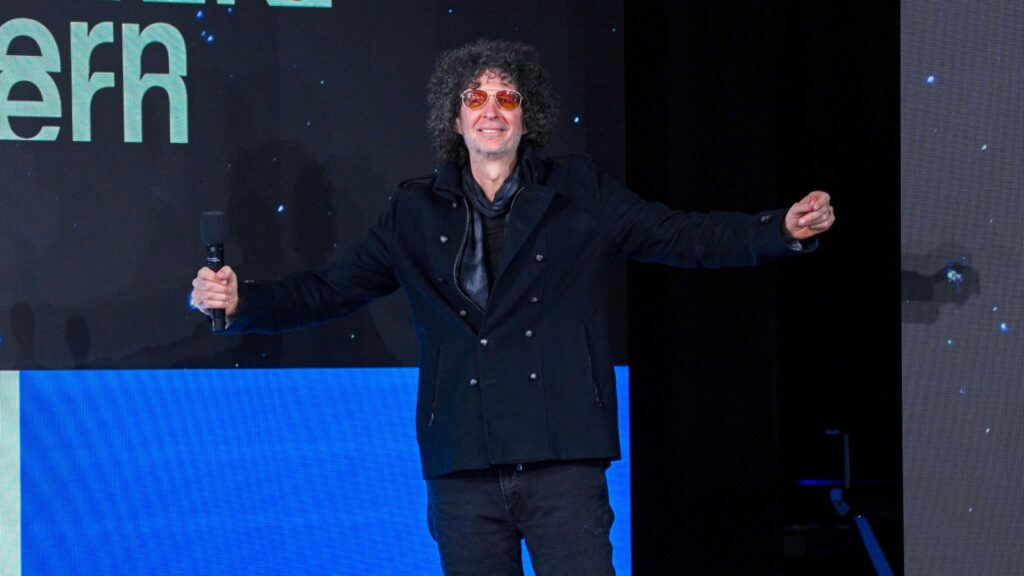All of Nintendo’s Zelda Games, Ranked
In one form or another, practically every gamer has some experience with the Legend of Zelda franchise. Once the industry’s longest-running and most influential series, its reach spans generations with releases on practically every major Nintendo console or handheld for over 38 years (we don’t talk about Virtual Boy).
With 21 mainline games, alongside countless spin-offs, remasters, and ports, the breadth of its legacy is vast. Like Star Wars, everyone has their first, their favorite, their hot take. Frankly, it would be easy for the series to feel a bit long in the tooth, but the secret to Zelda’s longevity is Nintendo’s knack for reinvention. No two games in the series feel exactly alike; there’s always some innovation or twist to make what’s old new again. More often than not, The Legend of Zelda makes what’s new new again, delivering outside-the-box concepts that fans never knew they needed and rival developers instantly begin to ape.
That spirit of reinvention also applies to the series’ narrative. The beauty of Zelda is, well, the legend. There is no wrong place to start, no dense lore to study. Each game functions as a complete reimagining — technically a reincarnation of its hero, Link, and the titular princess. There’s generally a new world to explore and journey to take, free from hamstrung continuity and readily accessible to kids and adults alike. Sure, there’s some retroactive timeline shenanigans courtesy of the IP Police at Nintendo HQ, but it’s all just a convoluted attempt to appease the fans. The series is at its best when it’s seemingly simple, yet deceptively deep in gameplay and story alike.
But with so many entries, there’s bound to be some hit-or-miss titles. While some games are genre-defining, once-in-a-generation epic, others function as stopgaps that pull together the scraps of ideas from the cutting-room floor to satiate players until the next big thing. Truthfully, there’s no bad games in the series, but when your schtick is making multiple “greatest game of all time” contenders, the whiffs can hit particularly hard.
In celebration of the latest installment, Echoes of Wisdom — the first Zelda game to actually star Zelda — we’re breaking down the series piece by piece and determining which games were the most legendary of all. This list was devised with the input of Rolling Stone staffers, gaming journalists, as well as (mostly civil) debate from our community.
With that, it’s time to answer the call with a definitive ranking of all mainline games in The Legend of Zelda. Hey, listen!
-
Tri Force Heroes
Image Credit: Nintendo of America The furthest embodiment from what most would consider traditional Zelda, this handheld-only multiplayer title lacks almost everything the series is celebrated for: clever puzzles, fantastical story, or satisfying gameplay loop. It’s a haplessly assembled mess lamp shaded by a costume-swapping mechanic pulled from a knockoff of Final Fantasy X-2 masquerading as a mainline game. Assuming you and two friends had a 3DS to tackle this quest, its buggy multiplayer and forgettable campaign likely never left much of an impact after a sleepover binge. Like other multiplayer Zeldas, Tri Force Heroes is iterative at best.
-
Four Swords / Four Swords Adventures

Image Credit: Nintendo of America Although we’re combining two totally separate spinoff titles here, few would argue that — even together — they equal a full-scale Zelda adventure. Four Swords, originally released as an add-on to the Game Boy Advance port of A Link to the Past, makes for a cute distraction. Its GameCube follow-up Adventures built out a more satisfying multiplayer journey but was hamstrung by the cumbersome GBA-to-GameCube control scheme. After three attempts at making the series multiplayer, Nintendo still hasn’t quite landed on the secret sauce. Thanks to some Olympic-level mental gymnastics, both technically remain canon while providing very little to the franchise overall.
-
Spirit Tracks
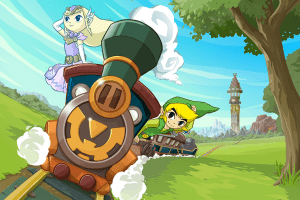
Image Credit: Nintendo of America The sequel to 2007’s Phantom Hourglass (itself an extension of The Wind Waker), Spirit Tracks seemingly has all the makings of a superior follow-up: cleaner graphics, tighter gameplay, and fresh vision, but it mostly amounts to naught. The story is mostly linear, on literal rails as players complete section after section, pushing forward on the game’s choppy tracks to bring a non-corporeal Zelda back into physical form. And like most Nintendo DS titles, its jagged visuals have aged poorly. In the end, it’s a mostly uninspired handheld entry of the series that mostly appeals to digital rail fans.
-
Phantom Hourglass
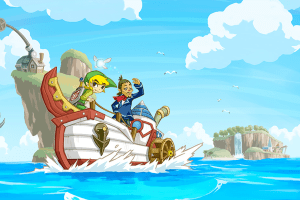
Image Credit: Nintendo of America As a cornerstone of Nintendo’s stable, it’s often hard to separate some Zelda games from the platform they released on. More so than any other franchise, the puzzle-centric series serves as a showcase (read: guinea pig) for the brand’s latest gimmick, for better or worse. Despite an adorable aesthetic lifted from the world of Wind Waker and occasionally clever dungeon design, Phantom Hourglass is ultimately victim to being “a DS Zelda,” leaning heavily on clunky, stylus-driven controls that people pretended were intuitive at the time, but everyone can agree are better left to legend.
-
Skyward Sword
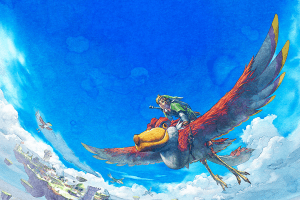
Image Credit: Nintendo of America It’s unclear who Skyward Sword was made for. A departure from the grim aesthetic of its console predecessor (Twilight Princess) but lacking the inherent charm of its Wind Waker-inspired handheld brethren, the world of Skyward Sword often feels downright goofy. Even removing the Wii-centric motion controls that made the original release an unintuitive slog to play, the game is unexpectedly boring with a mostly empty walled garden of a world to explore by sky and mediocre dungeons to plod through. This one hurt, and following this — potentially the worst mainline console entry in the series — the franchise remained in downturn for six years until being majorly rebooted.
-
The Minish Cap
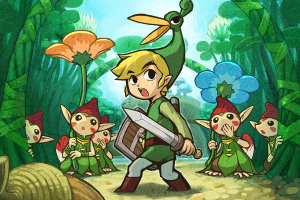
Image Credit: Nintendo of America / Capcom The culmination of multiple collaborations between Capcom and Nintendo on the Zelda series, The Minish Cap suffers from feeling inessential, despite its fluid, lively sprite work and general reverence for the franchise formula. As the Honey, I Shrunk the Kids of the series, it sees a miniscule Link tackling a pint-sized journey that aptly suited the Game Boy Advance and, despite failing to innovate or even perfect, it fared better than most of its handheld successors thanks to its eye popping visuals and solid mechanical foundation. It also beat Mario to the punch with a sentient cap.
-
Zelda II: The Adventure of Link
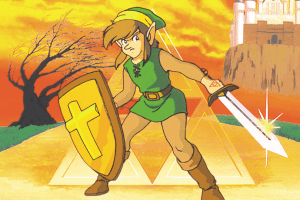
Image Credit: Nintendo of America The famed black sheep of the franchise, Zelda II is often saddled with a loathsome reputation for being obtuse, extremely difficult, and totally batshit crazy. Stemming from an era where game sequels often zigged in polar opposite directions from their forebearers, it’s an inspired oddity that stands alone as a bizarro coupling of one-off RPG elements and brutal side-scrolling combat that the franchise would never repeat. Although maybe it should. Where the bare-bones original left much to the imagination, Zelda II excelled at world building in ways even later entries could learn from.
-
A Link Between Worlds

Image Credit: Nintendo of America Despite being perceived as an exploratory franchise, much of the Zelda formula is predicated on guided progression through a series of escalating challenges. This handheld sequel to SNES’ A Link to the Past worked to nuke that perception with a more open-ended direction for dungeon crawling and arsenal acquisition. And although it made for a more lateral level of difficulty, lacking in escalating challenge, it was one of the more successful titles to break away from the frequently rigid preconceived notions for how a Zelda game has to play — clearly laying the groundwork for the series biggest shakeup to come.
-
Oracle of Ages / Oracle of Seasons
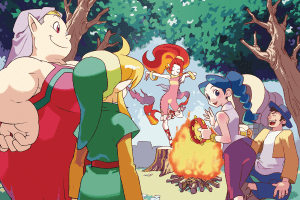
Image Credit: Nintendo of America / Capcom Nintendo’s first Zelda collaboration with third-party publisher Capcom, the Oracle duology excels in all the ways that make handheld Zelda games great with goofy, dreamlike settings, outlandish supporting characters, and bite-sized campaigns that are satisfying both on-the-go or in a binge session. Capitalizing on the era’s post-Pokémon obsession with dueling color-coded releases, the Oracle games actually offered unique experiences in their own right, with different stories, locales, and gimmicks to hook onto, making each game essential in their own right. Also, you can ride in the pouch of a boxing kangaroo.
-
Twilight Princess

Image Credit: Nintendo of America To many, Twilight Princess represents the pinnacle of the Zelda series. With a more mature, Tolkien-esque aesthetic, a charismatic (and eerily sexualized) deuteragonist in the form of Midna, and a straightforward lock-and-key dungeon-centric gameplay loop, it filled a hyper-specific niche many fans felt was missing in the post-Ocarina of Time world. For other players, it was an overcorrection from the whimsical aesthetic of The Wind Waker that relished in the worst impulses of 2000s game design, relying on a bland werewolf gimmick lifted straight from the discount barrel. But peruse Reddit and you’ll see droves of fans wishing to return to the Twilight Realm once more.
-
Echoes of Wisdom
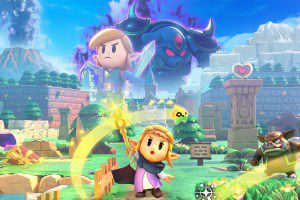
Image Credit: Nintendo of America It only took 38 years, but with Echoes of Wisdom, Princess Zelda herself finally got to star in her very own Zelda game. Picking up where most entries end with Zelda being rescued by Link, their roles are quickly reversed, setting up a legend where her eponymous highness must step into her own hero’s journey to save Hyrule from mysterious rifts. Using the visuals of 2019’s A Link to the Past remake, alongside some world bending magic reminiscent of 2023’s Tears of the Kingdom, Echoes blends the sensibilities of Zelda old and new to create a small-scale adventure that reapproaches the series’ formula in inventive ways, while still retaining its core DNA.
-
The Legend of Zelda
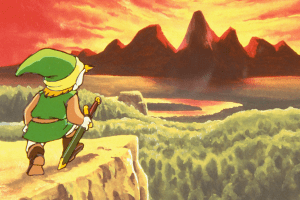
Image Credit: Nintendo of America “It’s dangerous to go alone.” With its first line, the original Legend of Zelda heralded a new age of gaming. No longer would open-world exploration be hidden behind text-based prompts. Video game prowess needn’t be bound to muscle memory completion of a preordained course. The world was yours to explore, and nobody was there to hold your hand. Simplistic by today’s standards and often frustrating to play without a guide, it isn’t the best this series could be, but it informed an entire industry and would inspire both developers and fans for generations to come.
-
Majora’s Mask
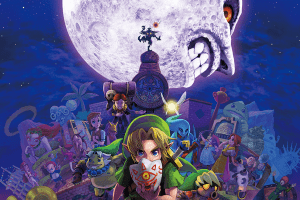
Image Credit: Nintendo of America One of the few direct sequels for the series at the time, and more specifically to the seminal title Ocarina of Time, Majora’s Mask had a lot to live up to. None of which it did. Instead, it pivoted into the terrain only a few sequels do — exploring deranged new worlds with a deliciously creepy tone. Starring young Link in the doomed Tim Burton-esque world of Termina, Majora’s Mask centers on a 72-hour ticking clock and time loop as players must prevent a gruesome end by literal moon fall. Brimming with existential dread and an undercurrent of fatalist humor, it’s unlike anything the franchise had or has seen since.
-
Link’s Awakening

Image Credit: Nintendo of America The series first handheld entry is also its best, piggybacking off the massive success of SNES’ A Link to the Past, while also leaning its own sense of Lynchian surrealism. Lengthy, but direct, it’s a perfect distillation of exploration, combat, and puzzle-solving fit for mobile play. Few handheld games ever reach this high without comprise, but Link’s Awakening delivers a definitively Zelda experience with gumption. It’s the perfect entry point for newcomers or casual gamers, and is one of the few examples in pop culture where “it was all a dream” actually works.
-
Ocarina of Time
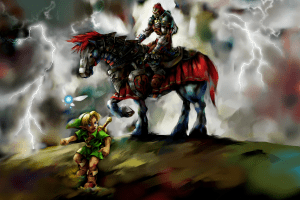
Image Credit: Nintendo of America Popularly considered the gold standard for the series, Ocarina of Time was a game changer in 1998. Fulfilling the promise of immersive 3D gaming for a generation weaned on sprites, it’s almost impossible to express how revolutionary this game felt at the time. Taking the formula perfected by A Link to the Past and grounding it in a time-jumping epic, the N64 classic set a high watermark for cinematic feel, and its haunting tale of childhood lost, hits just the same now that we’re all our own aged-up avatars. It also introduced the world to the first (but not the last) Zaddy Ganondorf.
-
A Link to the Past
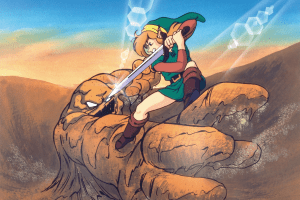
Image Credit: Nintendo of America Following a pair of schizophrenic NES titles, A Link to the Past soared onto the scene to not just cement (and perfect) the Zelda formula, but potentially kneecap every Super Nintendo title to come. The masterful blend of crispy 16-bit pixel art, inspired MIDI-based musical composition, and air-tight gameplay, the third entry in the series is a testament to an era of gaming where developers could, for the first time, actually execute the more ambitious ideas held back by the 8-bit era. A Link to the Past is the type of game that will never need a remaster — games are now intentionally made to look the way it felt.
-
The Wind Waker
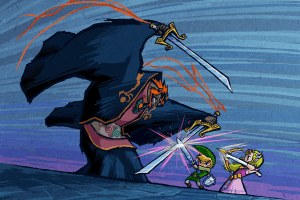
Image Credit: Nintendo of America After a bombastic Spaceworld 2000 demo video teased gamers with the raw power of the GameCube, the world was salivating for the next Ocarina of Time. What they got left them unsettled. In one of its boldest swings ever, Nintendo instead introduced a chibi-like, watercolor-washed version of the Zelda world that drew vicious ire. Misunderstood at the time, The Wind Waker offered the best of Ocarina of Time married with a timeless aesthetic that will forever make the case for art direction over graphical horsepower, while creating an oceanic open world to explore with unprecedented freedom. Beneath its colorful façade lies one of the series’ most somberly told and emotional tales.
-
Breath of the Wild
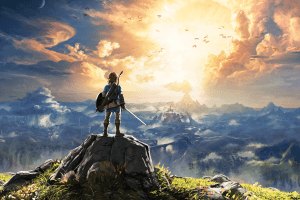
Image Credit: Nintendo of America The release of Breath of the Wild was a moment. It’s a once-in-a-generation cataclysmic shift in the perception of game design that would define how both players and developers would march into the future. Forget the nitpicking about weapon durability, the sparse (but omnipresent) narrative, or the optionality of almost everything. The freedom of choice and inviting design of its world is what makes Breath of the Wild not just one of the greatest Zelda game, but one of the influential games ever, inspiring a sea of imitators. It fulfills the original promise of the franchise — an endlessly surprising world ripe for conquest — built on a foundation of unguided discovery. Years later, people are still finding new ways to bend the game to its will, and no two people’s play-throughs are ever the same. Every other Zelda game is something to beat. Breath of the Wild provides a place to be.
-
Tears of the Kingdom

Image Credit: Nintendo of America After Breath of the Wild, many fans wondered how Nintendo could ever follow up what became the definitive Zelda experience. When rumors began to circulate that they’d be revisiting the same setting — even reusing the map and assets — a fear began to set in that the sequel would be little more than a rehash. How could it possibly go any further?
But it did go further, more so than anyone could’ve expected.
A direct sequel in the vein of Majora’s Mask, Tears of the Kingdom takes its predecessor’s world and mechanics and uses them as a springboard to go absolutely bananas. The key is crafting, in every regard. With the entirety of Breath of the Wild’s version of Hyrule still playable, it expands to the sky and deep underground, effectively doubling what was already one of the greatest expanses in gaming. Using a new toolkit allows players to manipulate the reality around them in any way they see fit. Anything in its world can be grafted together in ways that are only limited by your imagination. Its story goes deeper than the more subtly ambiguous Breath of the Wild, making for an operatic opus that’s now a watermark for the series.
Combining the best storytelling in Nintendo’s history and an endless wellspring of experimentation, Tears of the Kingdom manages to somehow perfect on the legend as one of the deepest games ever made.




